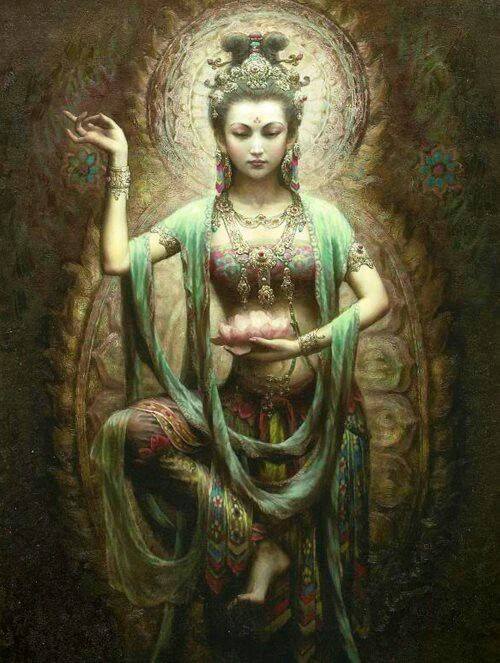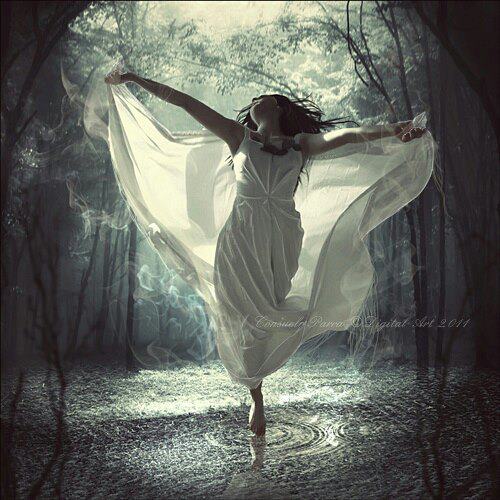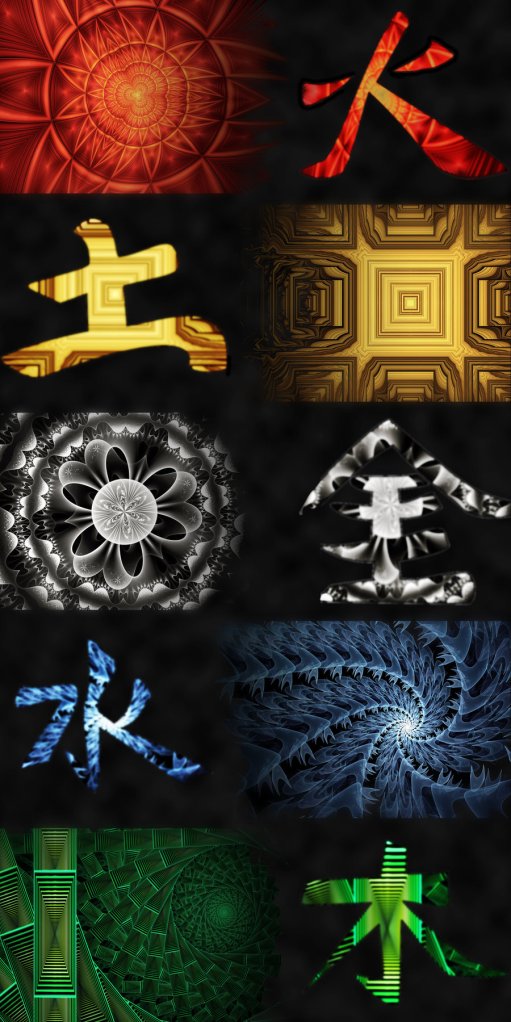 (1)
(1)
The Elements, an Eastern approach; What does it mean to you?
An interesting topic is the difference between the Western traditions Elements and The Eastern Elements with their philosophies.
In the Eastern Traditions, there are 5 elements that are from Taoism. Taoist cosmology is based on the beliefs of the School of Naturalists.
In this spirit, the universe is seen as being in a constant process of re-creating itself, as everything that exists is a mere aspect of Qi, which, “condensed, becomes life; diluted, it is indefinite potential”(1). Qi is in a perpetual transformation between its condensed and diluted state. These two different states of Qii, on the other hand, are embodiment of the abstract entities of yin and yang, two complementary extremes that constantly play against and with each other and can not exist without the other.
Human beings are seen as a microcosm of the universe, and for example comprise the Five Elements in form of the zang-fu organs. “Zang and fu consist of the 5 zang and 6 fu organs.”(2) As a consequence, it is believed that deeper understanding of the universe can be achieved by understanding oneself.
(refer to original source-3)“Wuxing (Wu-hsing)
The Chinese term wuxing (wu-hsing, “five processes” or “five phases”) refers to a fivefold conceptual scheme that is found throughout traditional Chinese thought. These five phases are wood (mu), fire (huo), earth (tu), metal (jin), and water (shui); they are regarded as dynamic, interdependent modes or aspects of the universe’s ongoing existence and development. Although this fivefold scheme resembles ancient Greek discourse about the four elements, these Chinese “phases” are seen as ever-changing material forces, while the Greek elements typically are regarded as unchanging building blocks of matter. Prior to the Han dynasty, wuxing functioned less as a school of thought and more as a way of describing natural processes hidden from ordinary view. During the period of the Han dynasty (202 B.C.E.-220 C.E.), wuxing thought became a distinct philosophical tradition (jia, “family” or “school”). Since that time, the wuxing system has been applied to the explanation of natural phenomena and extended to the description of aesthetic principles, historical events, political structures, and social norms, among other things. Cosmology, morality, and medicine remain the chief arenas of wuxing thought, but virtually every aspect of Chinese life has been touched by it. As such, wuxing has come to be inseparable from Chineseness itself and belongs to no single stream of classical Chinese philosophy.”(3)
(refer to original source-4)”Wood Element
Archetype: The Pioneer and Strategist/Directing
 It is yang/masculine in character. The predominant attributes are considered to be strength and flexibility, as with bamboo. It is also associated with qualities of generosity and idealism. One quality of the Wood element is leadership. It is the leader within us, that can take charge and determine a plan of action. The wood is one that seeks always to grow and expand. Wood heralds the beginning of life, springtime and buds, sensuality and fecundity.
It is yang/masculine in character. The predominant attributes are considered to be strength and flexibility, as with bamboo. It is also associated with qualities of generosity and idealism. One quality of the Wood element is leadership. It is the leader within us, that can take charge and determine a plan of action. The wood is one that seeks always to grow and expand. Wood heralds the beginning of life, springtime and buds, sensuality and fecundity.
Wood type people are often aggressive or assertive, direct, and can have a strong temper and a lot of drive. They are usually outgoing and socially conscious and can be insensitive. The Wood element is associated with negative feelings of anger, and positive feelings of patience and altruism.
Fire Element
Archetype: The Wizard and Socializer/Marketing
 Fire is yang/masculine in character, its direction is upward and its energy is expansive. In Chinese thought Fire is associated with the qualities of dynamism, strength and persistence; however, it is also connected to restlessness. The fire element provides, warmth, enthusiasm and creativity, however an excess of it can bring aggression, impatience and impulsive behavior. In the same way, fire provides heat and warmth, however an excess can also burn. Fire is the Element responsible for the passionate resonance when you are following your life’s calling. It is the joy and laughter associated with playfulness. Fire type people are charming, fun, mischievous, easily excitable, and change emotional states rapidly. They love change, bright colorsand environments that stimulate.The negative emotion is hate, while its positive emotion is joy.
Fire is yang/masculine in character, its direction is upward and its energy is expansive. In Chinese thought Fire is associated with the qualities of dynamism, strength and persistence; however, it is also connected to restlessness. The fire element provides, warmth, enthusiasm and creativity, however an excess of it can bring aggression, impatience and impulsive behavior. In the same way, fire provides heat and warmth, however an excess can also burn. Fire is the Element responsible for the passionate resonance when you are following your life’s calling. It is the joy and laughter associated with playfulness. Fire type people are charming, fun, mischievous, easily excitable, and change emotional states rapidly. They love change, bright colorsand environments that stimulate.The negative emotion is hate, while its positive emotion is joy.
Earth Element
Archetype: The Mediator and Peacemaker/Human Resources
 Earth is a balance of both yin and yang, the feminine and masculine together. Its motion is inward and centering, and its energy is stabilizing and conserving. It is associated with the turn of each of the seasons and with damp. In Chinese thought Earth is associated with the qualities of patience, thoughtfulness, practicality, hard work and stability. The earth element is also nurturing and seeks to draw all things together with itself, in order to bring harmony, rootedness and stability. Other attributes of the earth element include ambition, stubbornness, responsibility and long-term planning. On the shadow side, the earth element can represent selfishness and self-centeredness. Earth type people are usually warm, kind and supportive. They can be overprotective and tend to merge with their environment, having difficulties with boundaries. The negative emotion of the Earth element is worry and its positive emotion is empathy.
Earth is a balance of both yin and yang, the feminine and masculine together. Its motion is inward and centering, and its energy is stabilizing and conserving. It is associated with the turn of each of the seasons and with damp. In Chinese thought Earth is associated with the qualities of patience, thoughtfulness, practicality, hard work and stability. The earth element is also nurturing and seeks to draw all things together with itself, in order to bring harmony, rootedness and stability. Other attributes of the earth element include ambition, stubbornness, responsibility and long-term planning. On the shadow side, the earth element can represent selfishness and self-centeredness. Earth type people are usually warm, kind and supportive. They can be overprotective and tend to merge with their environment, having difficulties with boundaries. The negative emotion of the Earth element is worry and its positive emotion is empathy.
Metal Element
Archetype: The Alchemist and Judge/Organizing
 Metal is yin/feminine in character, its motion is inwards and its energy is contracting.Metal represents the minerals, crystals, and gems of the world. The metal aspect is the diamond found within each one of us. It is similar to the Air Element found in western paradigms. The Metal Element is the breath of life. When you are connected to that experience, you know your own self-worth. You respect others and yourself; you are willing to give and receive acknowledgment for the magnificent being that you are. The qualities associated with metal are unyieldingness, rigidity, persistence, strength and determination. Metal type people like minimalism. They are organized, clean, and contained. They can be controlling, ambitious, forceful and set in their ways as metal is very strong; and they are self-reliant and prefer to handle their problems alone.The negative emotion associated with metal is grief, while the positive emotion is courage.
Metal is yin/feminine in character, its motion is inwards and its energy is contracting.Metal represents the minerals, crystals, and gems of the world. The metal aspect is the diamond found within each one of us. It is similar to the Air Element found in western paradigms. The Metal Element is the breath of life. When you are connected to that experience, you know your own self-worth. You respect others and yourself; you are willing to give and receive acknowledgment for the magnificent being that you are. The qualities associated with metal are unyieldingness, rigidity, persistence, strength and determination. Metal type people like minimalism. They are organized, clean, and contained. They can be controlling, ambitious, forceful and set in their ways as metal is very strong; and they are self-reliant and prefer to handle their problems alone.The negative emotion associated with metal is grief, while the positive emotion is courage.
Water Element
Archetype: The Philosopher and Thinker/Innovation
 Water is yin/feminine in character, its energy is downward and its motion is stillness and conserving.
Water is yin/feminine in character, its energy is downward and its motion is stillness and conserving.
In Chinese Taoist thought, water is representative of intelligence and wisdom, flexibility, softness and pliancy; however, an over-abundance of the element is said to cause difficulty in choosing something and sticking to it. In the same way, Water can be fluid and weak, but can also wield great power when it floods and overwhelms the land.
When your Water Element is in balance, you use your resources of energy, time, contacts, and money wisely, neither hoarding nor squandering that which gives you life. Water is also the element of stillness and rest, taking time to rest and rejuvenate yourself. It is in the Water element that all great innovations and ideas are birthed.
Water type people appear a bit reserved, yet are often very creative, sometimes even eccentric. They can appear cool and stoic, yet have the capacities to be still and deeply reflect. The negative emotion associated with water is fear, while the positive emotion is calmness.”(4)
 (2)
(2)
(1) http://www.roadtofortworth.com/YY_ref.pdf (Taoism- PDF)
(2)Wuxing (Wu-hsing) ( http://www.iep.utm.edu/wuxing/ (Internet Encyclopedia of Philosophy; Peer reviewed academic resource; James Fieser, Ph.D., founder and general editor and Bradley Dowden, Ph.D., general editor)
(3) http://zangfu-omtcm.blogspot.de/ (Zang Fu TRADITIONAL CHINESE MEDICINE)
(4) http://www.innerjourneyseminars.com/the-five-elements.html (Michael Schiesser – Inner Journey Seminars) All pics from this blog are also from his original blog)
Moro
Art 1: “Wu Xing and the Cycle of Creation” by artist: JP-Talma @ http://jp-talma.deviantart.com/art/Wu-Xing-and-the-Cycle-of-Creation-316548011
Art 2: Elementalby blacher @ http://blacher.deviantart.com/art/Elemental-156113544

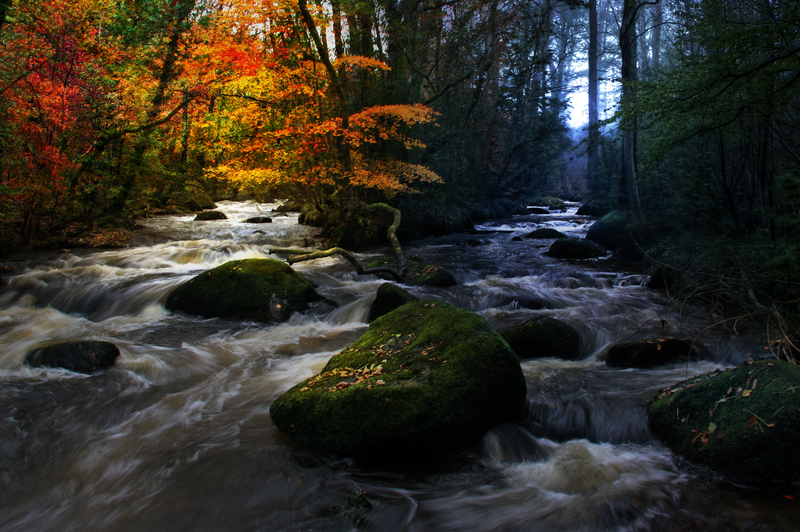

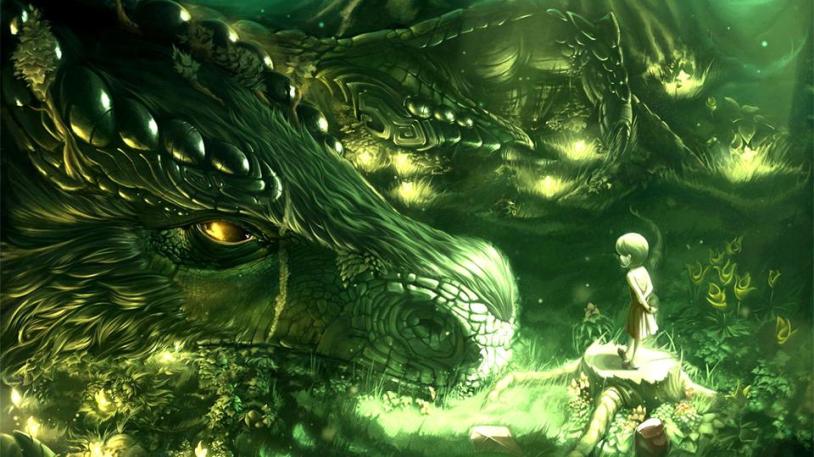
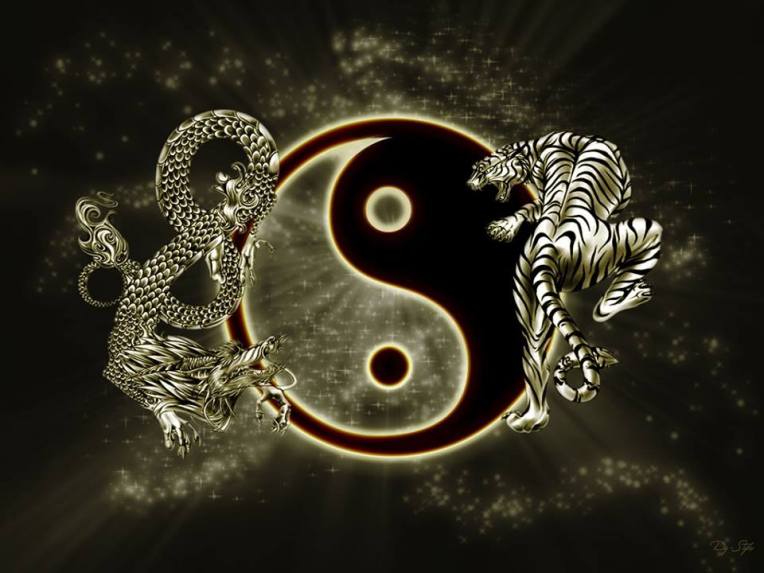

 It is yang/masculine in character. The predominant attributes are considered to be strength and flexibility, as with bamboo. It is also associated with qualities of generosity and idealism. One quality of the Wood element is leadership. It is the leader within us, that can take charge and determine a plan of action. The wood is one that seeks always to grow and expand. Wood heralds the beginning of life, springtime and buds, sensuality and fecundity.
It is yang/masculine in character. The predominant attributes are considered to be strength and flexibility, as with bamboo. It is also associated with qualities of generosity and idealism. One quality of the Wood element is leadership. It is the leader within us, that can take charge and determine a plan of action. The wood is one that seeks always to grow and expand. Wood heralds the beginning of life, springtime and buds, sensuality and fecundity. Fire is yang/masculine in character, its direction is upward and its energy is expansive. In Chinese thought Fire is associated with the qualities of dynamism, strength and persistence; however, it is also connected to restlessness. The fire element provides, warmth, enthusiasm and creativity, however an excess of it can bring aggression, impatience and impulsive behavior. In the same way, fire provides heat and warmth, however an excess can also burn. Fire is the Element responsible for the passionate resonance when you are following your life’s calling. It is the joy and laughter associated with playfulness. Fire type people are charming, fun, mischievous, easily excitable, and change emotional states rapidly. They love change, bright colorsand environments that stimulate.The negative emotion is hate, while its positive emotion is joy.
Fire is yang/masculine in character, its direction is upward and its energy is expansive. In Chinese thought Fire is associated with the qualities of dynamism, strength and persistence; however, it is also connected to restlessness. The fire element provides, warmth, enthusiasm and creativity, however an excess of it can bring aggression, impatience and impulsive behavior. In the same way, fire provides heat and warmth, however an excess can also burn. Fire is the Element responsible for the passionate resonance when you are following your life’s calling. It is the joy and laughter associated with playfulness. Fire type people are charming, fun, mischievous, easily excitable, and change emotional states rapidly. They love change, bright colorsand environments that stimulate.The negative emotion is hate, while its positive emotion is joy. Earth is a balance of both yin and yang, the feminine and masculine together. Its motion is inward and centering, and its energy is stabilizing and conserving. It is associated with the turn of each of the seasons and with damp. In Chinese thought Earth is associated with the qualities of patience, thoughtfulness, practicality, hard work and stability. The earth element is also nurturing and seeks to draw all things together with itself, in order to bring harmony, rootedness and stability. Other attributes of the earth element include ambition, stubbornness, responsibility and long-term planning. On the shadow side, the earth element can represent selfishness and self-centeredness. Earth type people are usually warm, kind and supportive. They can be overprotective and tend to merge with their environment, having difficulties with boundaries. The negative emotion of the Earth element is worry and its positive emotion is empathy.
Earth is a balance of both yin and yang, the feminine and masculine together. Its motion is inward and centering, and its energy is stabilizing and conserving. It is associated with the turn of each of the seasons and with damp. In Chinese thought Earth is associated with the qualities of patience, thoughtfulness, practicality, hard work and stability. The earth element is also nurturing and seeks to draw all things together with itself, in order to bring harmony, rootedness and stability. Other attributes of the earth element include ambition, stubbornness, responsibility and long-term planning. On the shadow side, the earth element can represent selfishness and self-centeredness. Earth type people are usually warm, kind and supportive. They can be overprotective and tend to merge with their environment, having difficulties with boundaries. The negative emotion of the Earth element is worry and its positive emotion is empathy. Metal is yin/feminine in character, its motion is inwards and its energy is contracting.Metal represents the minerals, crystals, and gems of the world. The metal aspect is the diamond found within each one of us. It is similar to the Air Element found in western paradigms. The Metal Element is the breath of life. When you are connected to that experience, you know your own self-worth. You respect others and yourself; you are willing to give and receive acknowledgment for the magnificent being that you are. The qualities associated with metal are unyieldingness, rigidity, persistence, strength and determination. Metal type people like minimalism. They are organized, clean, and contained. They can be controlling, ambitious, forceful and set in their ways as metal is very strong; and they are self-reliant and prefer to handle their problems alone.The negative emotion associated with metal is grief, while the positive emotion is courage.
Metal is yin/feminine in character, its motion is inwards and its energy is contracting.Metal represents the minerals, crystals, and gems of the world. The metal aspect is the diamond found within each one of us. It is similar to the Air Element found in western paradigms. The Metal Element is the breath of life. When you are connected to that experience, you know your own self-worth. You respect others and yourself; you are willing to give and receive acknowledgment for the magnificent being that you are. The qualities associated with metal are unyieldingness, rigidity, persistence, strength and determination. Metal type people like minimalism. They are organized, clean, and contained. They can be controlling, ambitious, forceful and set in their ways as metal is very strong; and they are self-reliant and prefer to handle their problems alone.The negative emotion associated with metal is grief, while the positive emotion is courage. Water is yin/feminine in character, its energy is downward and its motion is stillness and conserving.
Water is yin/feminine in character, its energy is downward and its motion is stillness and conserving.

